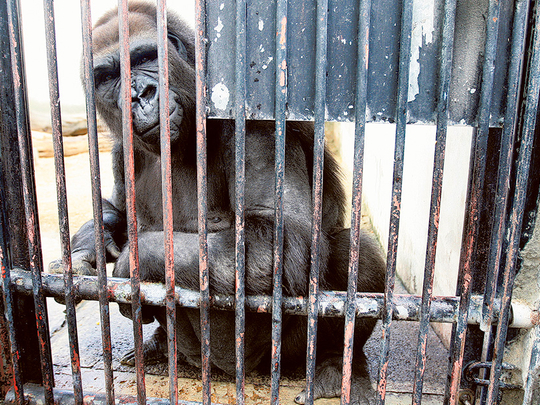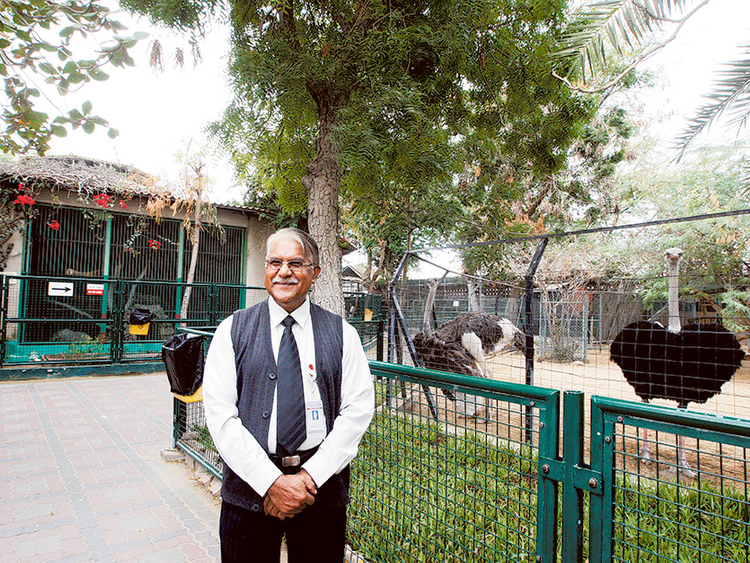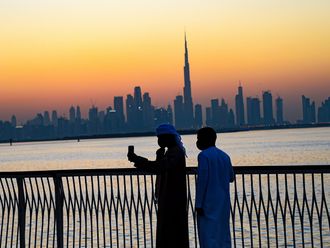
Dubai: At 5am in the morning, a two-hectare piece of land in the heart of Jumeirah comes alive with an avian chorus. Parakeets, parrots, owls, ostrich, cormorants and other birds celebrate the glory of morning. For neighbours living in the vicinity, the cacophony has been business as usual for the last 48 years.
Welcome to the Dubai Zoo, one of the world’s most compact zoos that houses about 1,209 animals.
However, there are many challenges in housing so many wild animals in such a small space in the middle of an urban environment. The shortage of space leads to a core concern — the well-being of animals, particularly in the hot and humid months. The strong odour of animal excreta in an enclosed space is another ongoing concern.
Currently, the Dubai Zoo is on the last legs of its existence with a 200-hectare safari park coming up on the outskirts of the city very soon. However, the project — which was slated to open in 2015 — still awaits completion. In the meanwhile, this menagerie in the midst of a bustling city continues to do its job, with the help of zoo director Dr Reza Khan and his staff of 28 animal keepers, 13 zoo guides (who are being trained for the upcoming animal safari) and a full-time veterinarian, among other periphery staff.
The constraints on space means that the Dubai zoo is so saturated with animals that it hasn’t bought a single new animal since 1991. However, it has always sought to accommodate endangered species of bird and animals that are brought into the country and seized by the authorities. Last year, the zoo took in a brown fish owl and 500 lovebirds.
Dr Reza Khan, director of Dubai Zoo, says had the animals come in from the wild, they would have been unable to adjust to the space. “Most animals we got here are from captivity and they adapted quickly. At one time, we had 800 parakeets that were seized by the authorities. Not one survived because of the lack of space.
“The zoo is narrow and space for the animals is congested. Space is a real issue — especialy on crowd-pulling days like the two Eid holiday periods, for example, when we get nearly 10,000 visitors per day,” says Dr Khan.
Considering that the zoo is open for 10 hours each day, the volume nearly adds up to a 1,000 visitors an hour, making the logistics of managing the crowds tough.
Space constraints make for many challenges that have to be faced on an ongoing basis at the Dubai Zoo. Clarity of view, at the core of visitor expectations, for example, can get compromised. Each of the animal enclosures has a double fencing, thick cage bars and mesh to protect the animals and provide safety for the public. But “this sometimes hampers the visitors from getting a clear view of the animals as well as to take pictures”, says Dr Khan.
Another concern, as you walk around the zoo, is the stench of the excreta which is palpable. “Unfortunately, it’s an odour we cannot get rid of,” says Dr Khan. He explains why. The zoo does not have soft ground for the big cats within encloures as cleaning out the stool and urine would pose a real health challenge given the relatively small area. All big enclosures at the zoo have concrete floors. After every feed, the big cats (tigers and lions) soil the floor and while afternoons are clean-up times, come evening, when the zoo is open to the public, cleaning the enclosure is not an option, said Dr Khan.
The concrete floors also pose a health risk to the animals as the lack of soft cushioning on the floor strains the joints of the animals. “For big cats especially, we try to divide the floor into concrete and partially sandy areas so that they get some relief. We change the sand once a year,” Dr Khan explains.
“The dried droppings are scraped off the floor in the morning and the floor washed. The water and the solids flow into deep pits in the enclosures that are connected to the main drainage system. Fresh drinking water is supplied to the animals each day,” he adds.
Another problem arising from constrained space is poor ventilation which arises from the zoo being walled up. “There is poor ventilation at the ground level and this aggravates the stench. We have to use deodorisers and disinfectants that are animal-friendly as they are likely to lick the floor,” he explains.
During summer, poor ventilation causes the place to heat up. To counter this, the animal keepers have taken several steps. Greening the zoo has been a major strategy. “We have planted more than a 100 trees of different varieties since 1990, such as the mesquite, tamarind, almond, bear and fig. This green cover has helped lower the temperature inside the zoo. During summer, the temperature inside is two degrees less compared to the environs outside,” says Dr Khan.
The hot months see the animals constantly sprayed with cool water two to three times a day with huge blowers and dehumidifiers cooling the air and sucking out the humidity. Some animal enclosures are also fitted with fans and air-conditioning. Drinking water for the animals during summer is chilled with the addition of ice pieces. Even the food served to them is cooled before they eat it.
The issue of space does not just have a physical impact on the animals, it also has an emotional consequence. Many animals can show signs of boredom as they do not have enough place to wander about and explore. On Tuesdays, when the zoo is closed to the public, the tigers, lions, gorillas and chimps turn listless due to the lack of human interaction, which they have grown so accustomed to. However, the animal keepers make it a point to engage with their wards as they talk to them, banter with them daily and reinforce good habits and good behaviour by offering rewards.
All animals are regularly checked for health issues and if an animal breaks a leg or falls sick, it has a very slim chance of survival as there is hardly room for exercising the animal’s injured limb. One of the common problems that zoo officials have is to ensure that maggot infestation is kept under control. Animals are tranquillised and the larvae cleaned out. “They are regularly checked for this [maggot infestation],“ says Dr Khan, “and long-acting antibiotics are administered to debug them internally as well.”
Despite the challenges, however, the Dubai Zoo has, over the decades, given many hours of pleasure and fun to millions of visitors, children and adults. And until such time as the new Safari Project Park by Dubai Municipality comes into existence — and Dr Khan is optimistic that it will happen very soon — the Dubai Zoo will continue to be a compeling attraction, says Dr Khan, though it would help if the public would cooperate and desist from unruly and noisy behaviour while visiting the zoo.













